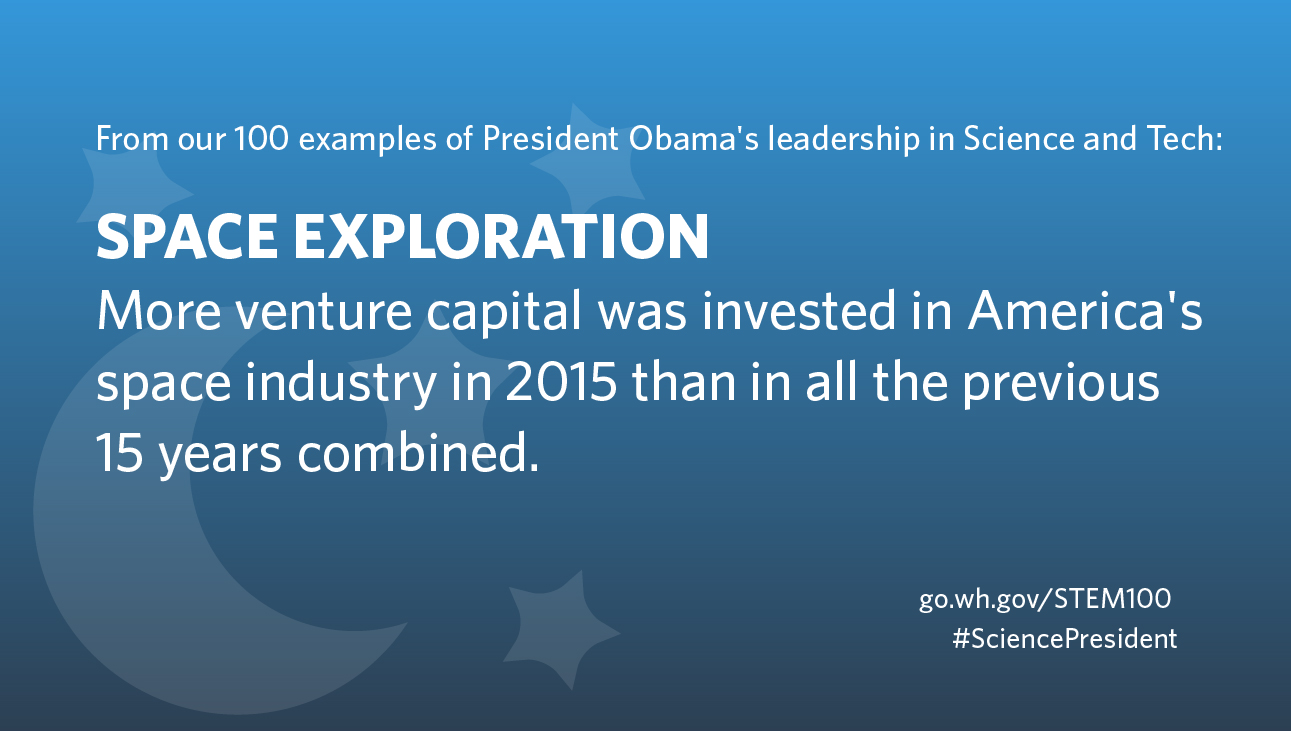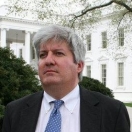
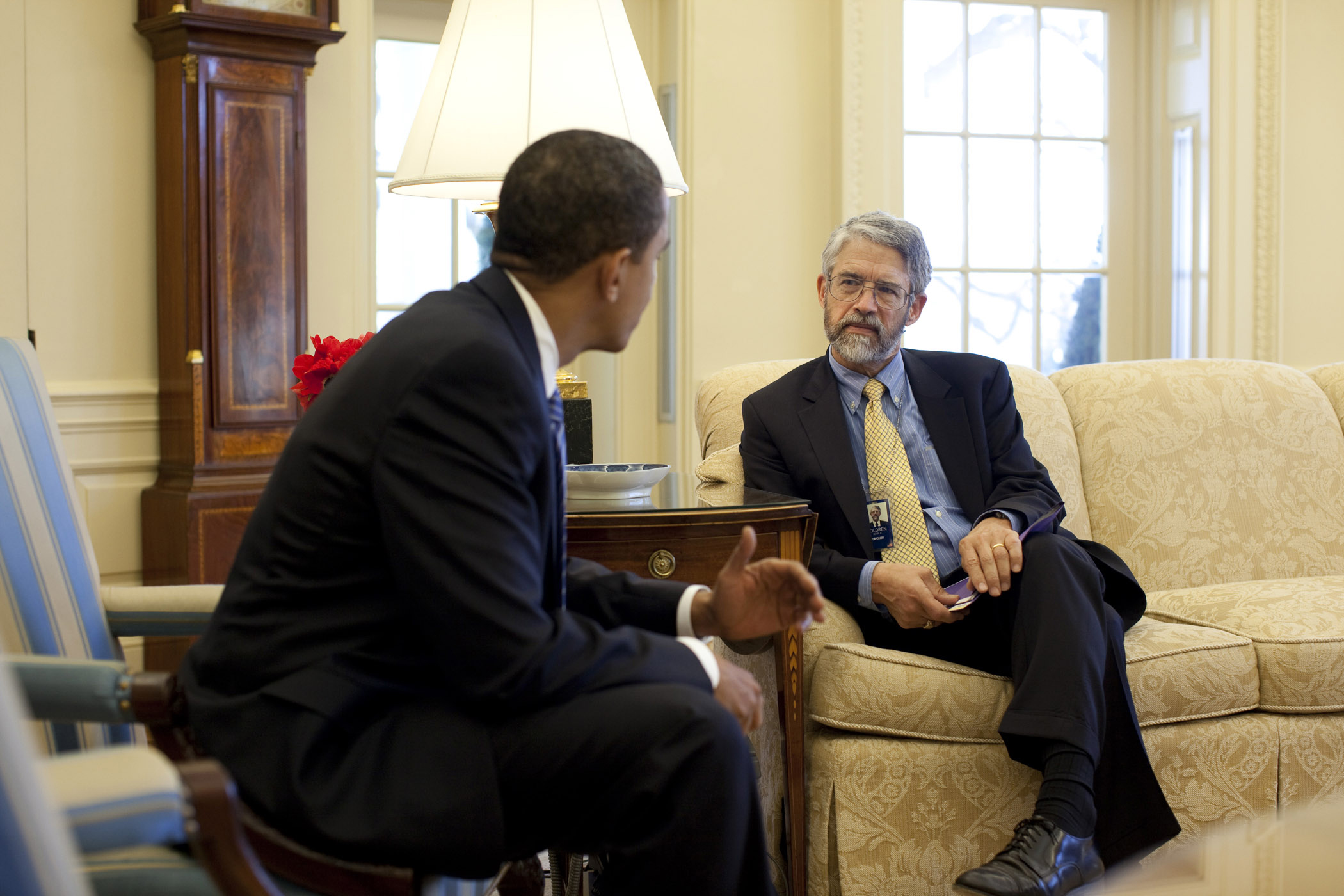
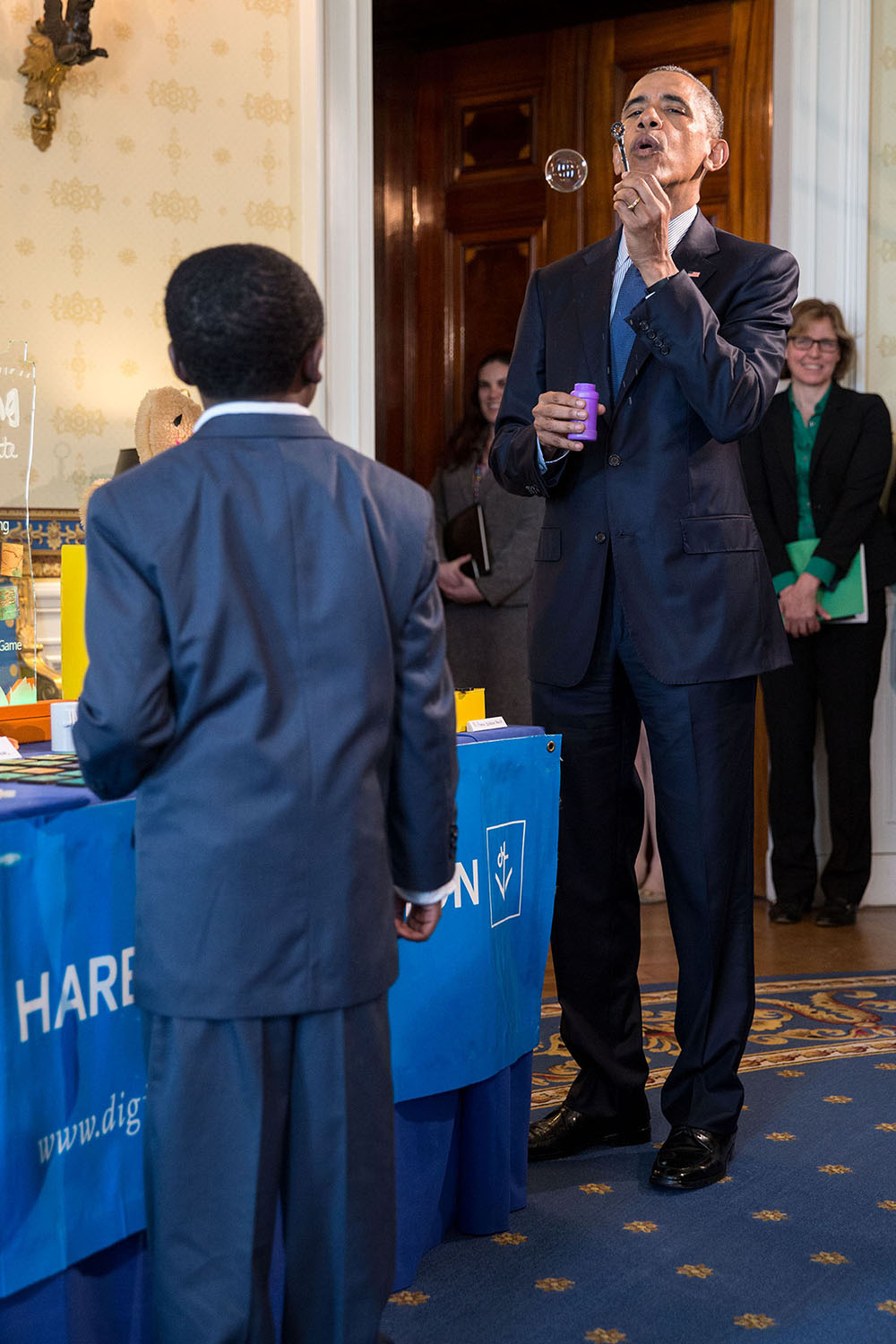
On January 20, 2009, President Obama issued a simple and powerful pledge: to restore science to its rightful place. Coming into office, the President was committed to reinvigorating the American scientific enterprise through a strong commitment to basic and applied research, innovation, and education; to restoring integrity to science policy; and most importantly, to making decisions on the basis of evidence, rather than ideology.
Today, the Administration is releasing a list of 100 examples of the profound impact that the President’s leadership has had in building U.S. capacity in science, technology, and innovation and bringing that capacity to bear on national goals. The release of this list also marks the milestone of Dr. John P. Holdren becoming, on June 18, 2016, the longest-serving President’s Science Advisor since Vannevar Bush pioneered a similar role while serving Presidents Roosevelt and Truman during and after World War II.
Be sure to check out the full list, but here is just a sampling:
-
Increased science, technology, and innovation talent in the Administration. The President created three new high-level science, technology, and innovation positions in the White House—a U.S. Chief Technology Officer, a U.S. Chief Information Officer, and a Chief Data Scientist. Through the U.S. Digital Service, GSA’s 18F, and the Presidential Innovation Fellows program—each created by this Administration—more than 450 engineers, designers, data scientists, and product managers have signed on for a tour of duty to serve in over 25 agencies alongside dedicated civil servants to improve how government delivers modern digital services to the American people. He also reinvigorated the President’s Council of Advisors on Science and Technology (PCAST).
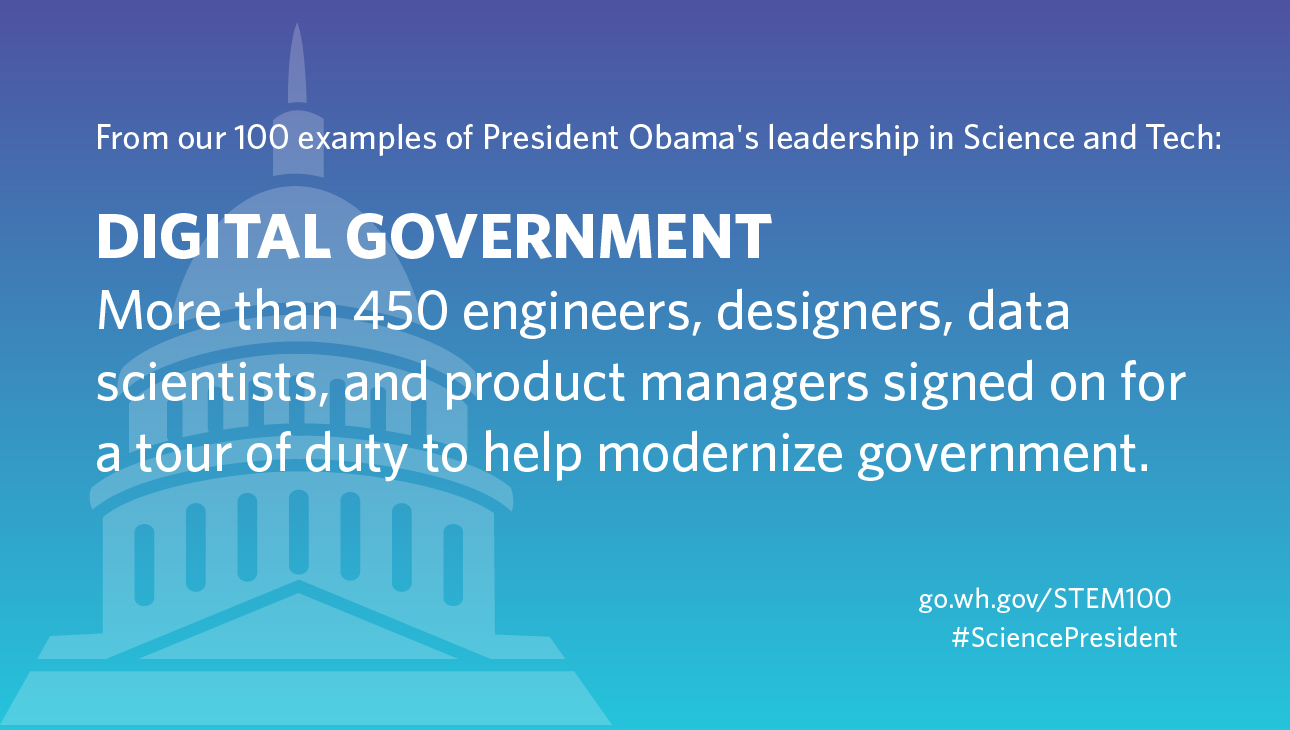
-
Restored scientific integrity, opened up data, and enhanced collaboration with citizens. On the first day of his Administration, the President issued a Presidential Memorandum calling on all the agencies in the Federal Government to work together to create “an unprecedented level of openness” in government and to “establish a system of transparency, public participation, and collaboration,” and soon thereafter issued a Presidential Memorandum on scientific integrity to ensure the public is able to “trust the science and scientific process informing public-policy decisions.” To date, more than 180,000 Federal datasets and collections have been made available to the public on Data.gov, and more than 4 million full-text scientific journal articles and growing volumes of scientific research data are now free and accessible to the public via agency-designated repositories. Since 2010, more than 80 Federal agencies have engaged 250,000 Americans through more than 700 challenges on Challenge.gov to address tough problems.
-
Enacted a historic increase in research and development, and maintained it as a priority despite tight fiscal constraints. With $18.3 billion in research and development funding, the Recovery Act of February 2009 was part of the largest annual increase in research and development funding in America’s history, and every President’s budget proposed by President Obama since then has consistently prioritized research funding.
-
Prioritized and encouraged broad participation in STEM education. The President’s Educate to Innovate campaign, launched in November 2009, has resulted in more than $1 billion in private investment to improve K-12 STEM education. The Nation is on track to meet the President’s January 2011 State of the Union goal to put 100,000 additional excellent STEM teachers in America’s classrooms by 2021. The President has helped showcase to students—including through events such as the White House Science Fair—that science, math, engineering, and computer programming are deeply compelling subjects that can help solve problems locally and globally.
-
Launched a national network for manufacturing innovation. The Administration has launched a national network of nine Manufacturing Innovation Institutes, supported by over $600 million in Federal investment and matched by more than $1.2 billion in non-Federal investment, and is on a course to launch 15 institutes by January 2017.
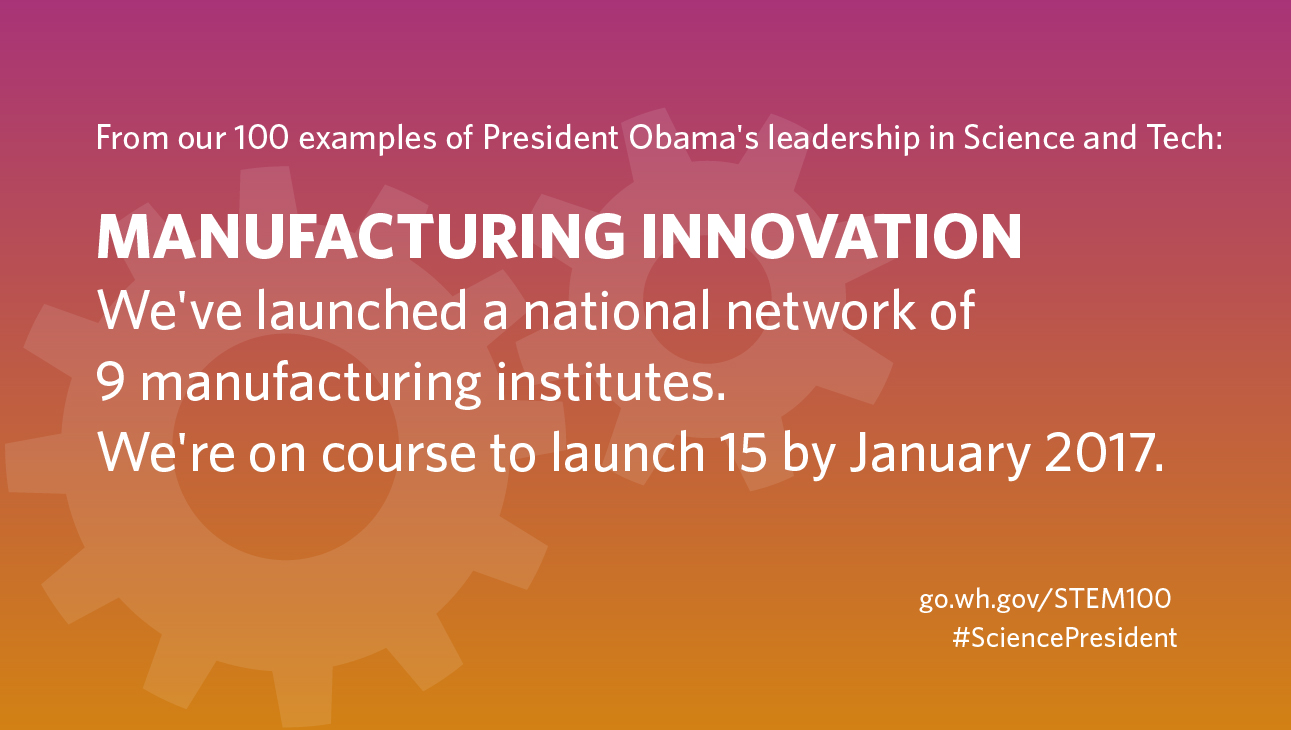
-
Expanded entrepreneurship across the nation. From 2014 to now, the Small Business Administration has funded over 100 startup accelerator programs in every corner of the country, serving well over 3,000 startups that have collectively raised over $850 million in capital. As part of the first-ever White House Demo Day in August 2015, 40 leading venture-capital firms, with more than $100 billion under management, committed to advance opportunities for women and underrepresented minorities, and more than a dozen major technology companies committed to new actions to ensure diverse recruitment and hiring.
-
Driven innovation in health care. In January 2015, President Obama launched the Precision Medicine Initiative, providing more than $200 million to accelerate a new era of medicine that delivers the right treatment at the right time to the right person, taking into account individuals’ health histories, genes, microbiomes, environments, and lifestyles. In January 2016, the President tasked Vice President Biden with heading a new national effort to end cancer—by encouraging public and private efforts to double the rate of progress in cancer prevention, diagnosis, treatment, and care in order to make a decade’s worth of advances in 5 years. In addition, President Obama launched the BRAIN Initiative in April 2013 to develop neuro-technologies that could expand our understanding of how the brain works and uncover new ways to treat, prevent, and cure brain disorders. This effort has already catalyzed $1.5 billion in public and private funds. Further, the President signed an executive order in September 2014 directing key Federal departments and agencies to take action to combat the rise of antibiotic-resistant bacteria.
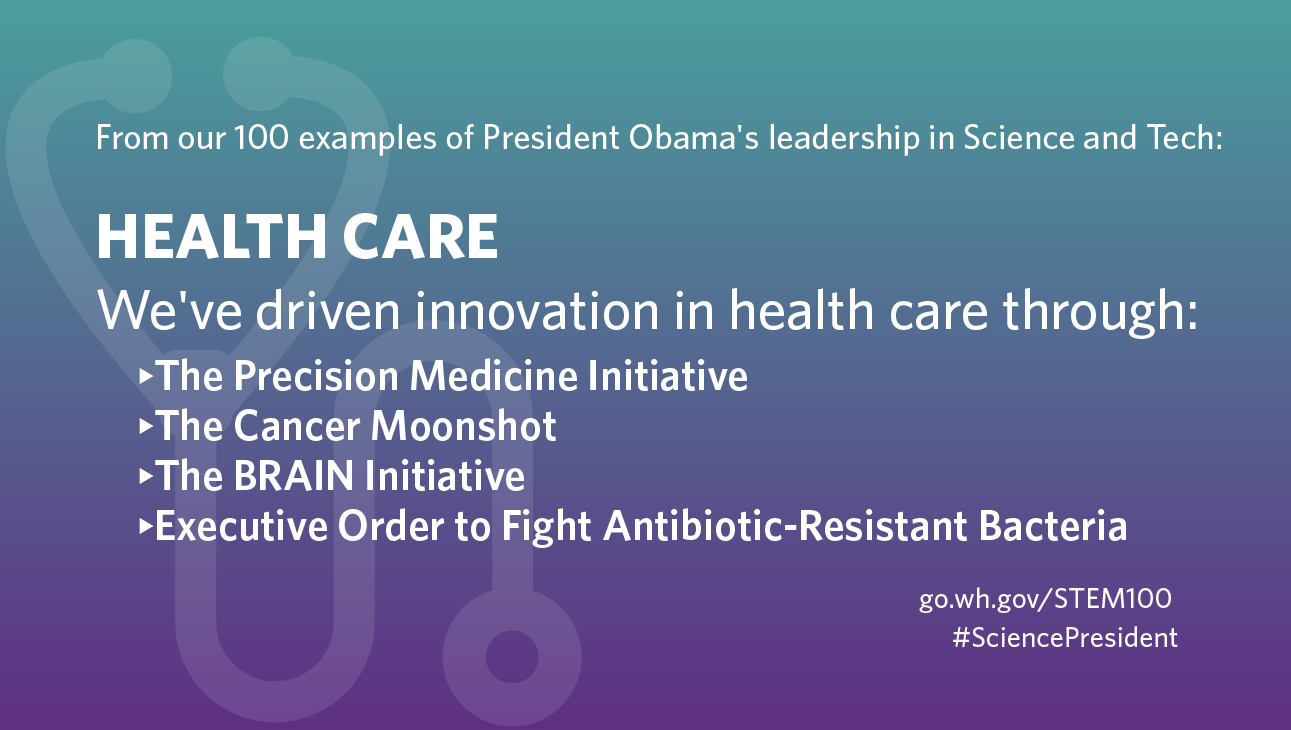
-
As part of a historic push to take action on climate change, contributed to the rapidly declining cost of renewable-energy technologies and issued new greenhouse gas and fuel-economy standards. The United States now generates more than three times as much electricity from wind and 30 times as much from solar as it did in 2008; and the cost for wind electricity in good-to-excellent sites has fallen roughly 40 percent, and the cost for solar electricity has fallen by 50-60 percent. The Administration also released greenhouse gas and fuel-economy standards for light duty and heavy duty vehicles. The fuel-economy standards for passenger vehicles are the toughest in U.S. history and, once fully implemented, will save drivers as much as $8,000 in fuel costs over the life of their new vehicle while avoiding 6 billion tons of greenhouse gas pollution and reducing American dependence on foreign oil by 2 million barrels per day in 2025.
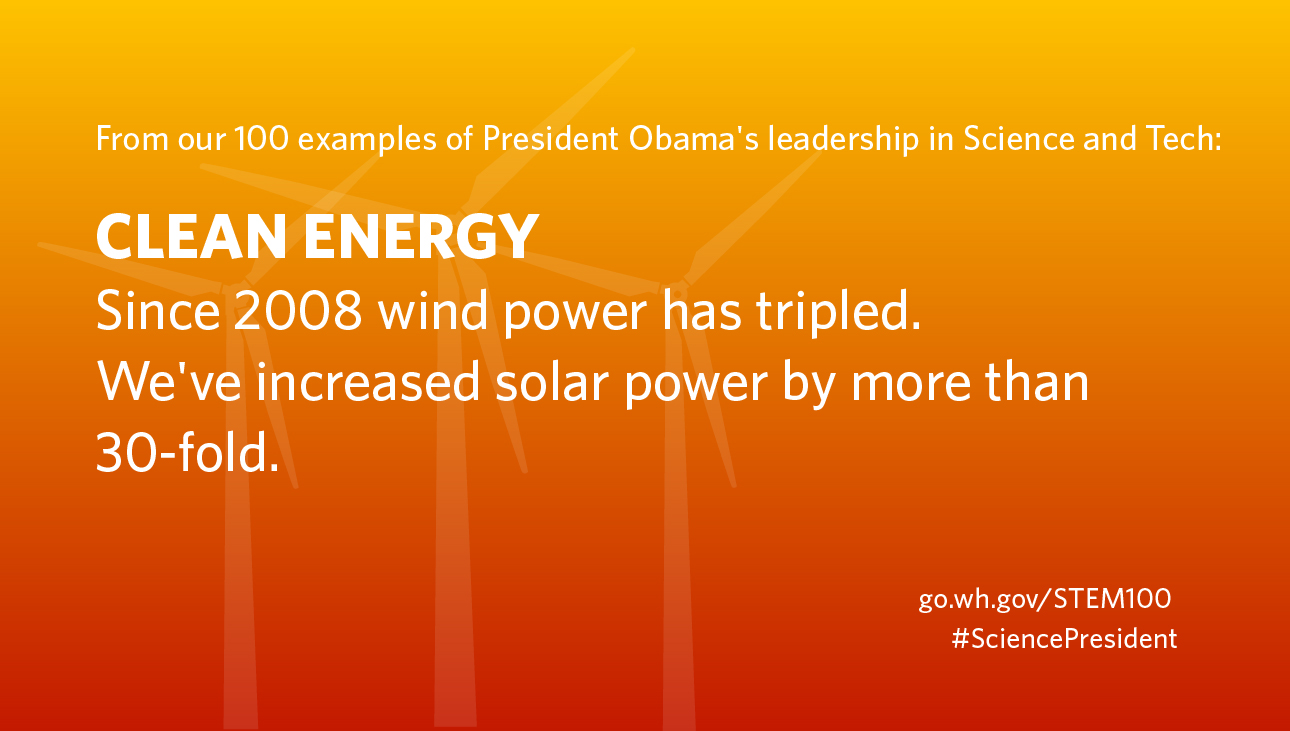
-
Expanded national, local, and mobile broadband access. Under the Recovery Act, the Administration added or improved more than 114,000 miles of broadband infrastructure, making high-speed connections available to more than 25,000 community institutions. Through aggressive spectrum policy and private investment, more than 98 percent of Americans have access to fast 4G/LTE mobile broadband.
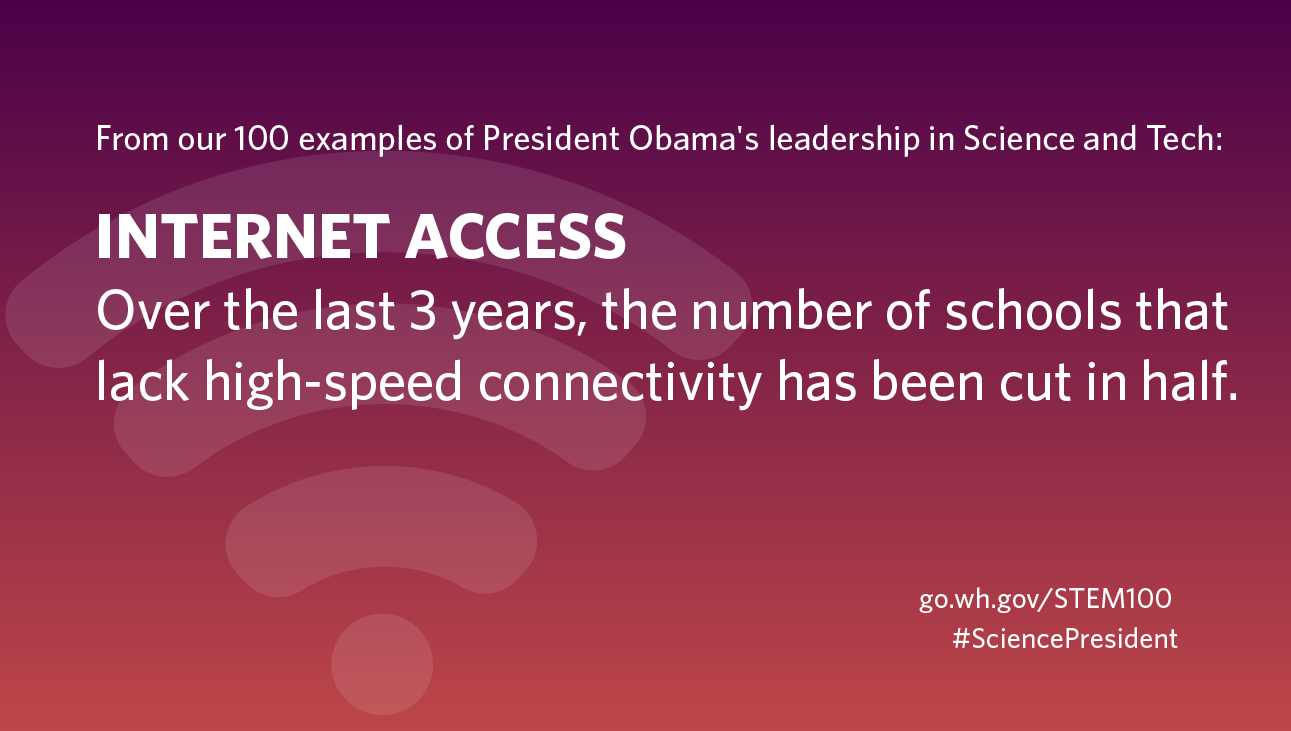
-
Fostered a burgeoning private space sector and increased capabilities for our journey to Mars. Working with NASA, American companies have developed new spacecraft that are delivering cargo to the International Space Station (ISS) and will start ferrying astronauts there by the end of 2017. The Administration’s investments in space technology development, including through the Space Technology Mission Directorate created by NASA in 2013, are developing less-expensive capabilities for NASA’s exploration missions and for the President’s goal of a human mission to Mars in the 2030s. Due to the Administration’s leadership, ISS’s lifetime has been extended twice, and the Station is now due to continue operating until at least 2024.
